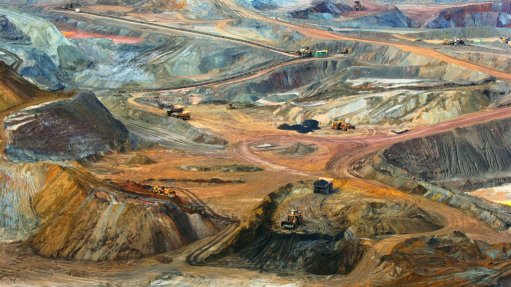
MARKET RIPE FOR IN-DEMAND MINERALS Emerging market trends indicate that there is a growing appetite for key minerals to facilitate the global energy transition
An emerging trend in Latin America, and South America in general, is the shift from mining certain commodities to mining commodities that are more critical for the energy transition, such as copper, reports field research professional services firm Southern Pulse founder and managing partner Samuel Logan.
“One of the trends that we’re noticing in Latin America, not just South America but [also in] the western hemisphere, is that mining companies that have 20, 30 and 40 years of experience in the business, focusing on gold and geological derivatives of gold, are retooling, shifting and looking at investing in copper,” he states.
The drive for copper, says Logan, is closely connected to the drive in electronic vehicle development and takeup by consumers, as well as the growing demand for computer and silicon chips required for the significant amount of processing power that generative AI applications require.
In outlining the importance of the mining sector in South America, the firm identified the high demand for a variety of commodities, including lithium, copper, nickel, graphite and gold, with their importance underscored by the advancement of the green transition, globally.
Amid the potential expansion of the mining industry on the continent, its economies rely heavily on commodity markets and do not have strong financial services or an industrialisation base, the firm indicates.
Logan notes that the current volume of copper being mined is not enough to meet future demand projections.
In this regard, he says Southern Pulse has noted a growing response to this from companies – not traditionally known for mining copper – that are refocusing their strategic decision-making directives.
In terms of new copper and other energy transition metals projects coming online, Southern Pulse operations director Caitlin Klemme says a deficit is created in that some of the traditional mining majors’ decisions to increase investment in new minerals is lagging, owing to a vast volume of concessions that are still being explored, as well as owing to companies still waiting for permitting to continue exploration efforts, or start mine construction.
“It is still going to take time before they get those minerals to market. There is going to be this gap and I think that is part of why we see a very high demand and pricing [for some critical minerals] now . . .,” she notes.
It takes quite a bit of time to build a mine and get it fully operational, while mines that have been under care and maintenance will also take a while to become productive again using the right technology, adds Klemme.
Regional Challenges
Southern Pulse has noted an increase in illicit minerals mining and trading in South America, partially spurred by global geopolitical tensions.
Klemme highlights that Russia is a major global gold producer, but its gold may not be bought because of sanctions imposed on the country, thereby increasing demand for unsanctioned gold from other regions as the commodity gains record value.
“In terms of the challenges for us in South America, at least one of the biggest challenges is going to be getting . . . companies and governments to understand that illicit mining, which has been a problem for decades at this point, can no longer be ignored.
“It is expanding and affecting more mining operations day to day. In this post Covid-19 space, criminal organisations have diversified their sources of income significantly, and have further expanded into illicit mining in the past five years,” she adds.
Logan also outlines the dual problem of water and electricity security in South America.
“One of the first desalinisation plants that was looked at seriously as an investment was for a mine in Chile, because the mine needed fresh water for . . . its operations.
“If we look at northern Argentina and [its] . . . lithium area . . . as well as [that of] . . . Bolivia, water is a precious resource that the miners are competing over and are, in some ways, leveraging their government contracts and government relations to win that fight,” he says.
Logan says that their mines
are also generating their own electricity as opposed to constantly using grid power, and these efforts are made to improve not only mines but also the communities that surround them.
Going forward, Southern Pulse asserts that there will be a stronger drive for the modernisation of South America’s mining industry, especially as it relates to industry processes that drive the development of new concessions and concession management, but that every aspect relating to the life cycle of a mine will be impacted.
The company stresses that investors should understand the risk profile attributed to mining in the region, with these risks changing frequently.
Southern Pulse will continue to facilitate the transmission of important knowledge of South America’s mining environment to enquiring corporate investors.